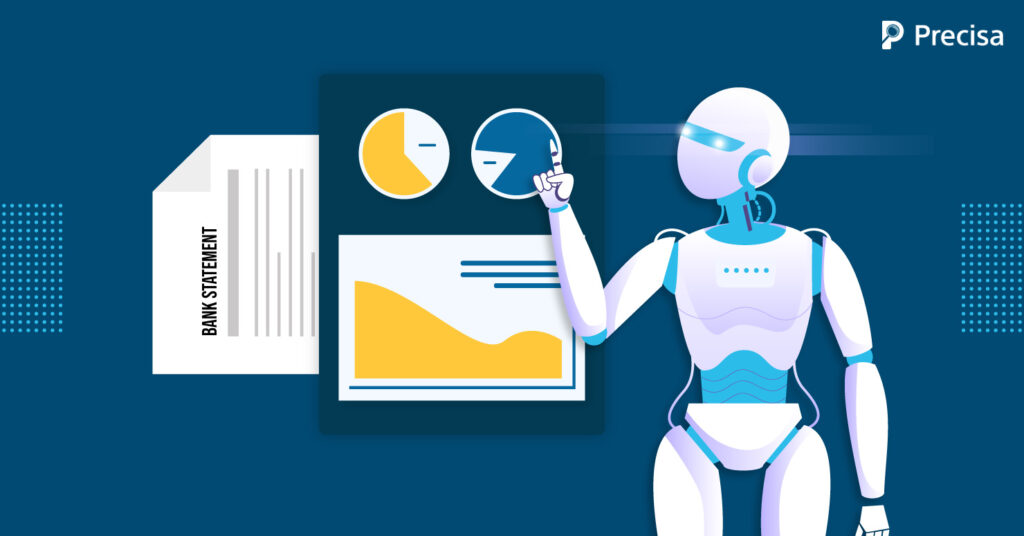Why Data and Automation is the Future of SME Lending

Artificial Intelligence and Machine Learning are becoming the forefront of financial services across domains. One of the reasons behind this is an increase in lending efficiency and another being reduced manual error. However, implementing this technology can be challenging for many SMEs.
In lending institutions, legacy systems and manual effort have been the norm. Breaking this practice and introducing automated tools and data-based decision-making solutions can appear as though this technology seeks to replace manual labour.
Contrary to this myth, automation and data-based decision-making tools simply enhance operations, allow lenders to increase their productivity and incur better customer bases with maximum customer satisfaction with their services.
So, how can AI and automation define the future of SMEs? Let’s explore in detail.
Five Ways Data and Automation Can Boost SME Lending Productivity
According to recent reports by UBS Evidence Lab, AI is being used by 75% of banks with assets over $100 million.
Moody’s Analytics of Financial Institutions also revealed in one of their reports that 30% of lenders are using AI and ML to enhance their operations. Out of these, 70% intend to use the technology for portfolio management, monitoring, and gaining insights.
There arises a question – how can automation and data have a holistic effect on the customer loan lifecycle and enable thoughtful process enhancements?
They serve as a key to enhancing customer relations with faster and more accurate credit analysis and financial statement processing. Here are some areas where automation and data can accelerate and enhance the various lending stages.
1. Automation during the pre-screening stage
Banks ought to examine the customer and their eligibility to take a loan for any lending decision. Automation can step right from this stage by screening those loan applications that cannot get to the next stage. This action can give relationship managers and lenders the time and resources to deal with the applications that do show potential.
For instance, automation tools can assess the risk scores by weighing factors like geographic location, industry, time in business, total assets and revenues and other factors that qualify the applicant with the minimum criteria for taking a loan.
Pre-screening KYC details with automation tools make life easier for lenders and managers by screening unqualified applications. This allows lenders to focus on more challenging applications and use their expertise and analysis elsewhere.
Credit analysis and underwriting are done after pre-screening is completed.
2. Automation during the loan application stage
Customers today require fast decisions from lending institutions. With automation tools, lenders can collect the relevant information from relevant borrowers and quickly decide.
Automation’s standardised, auditable and repeatable process helps make quick and accurate decisions and ensures that all necessary data is furnished for the lending process.
3. Automation during document collection and verification stage
When it comes to commercial lending, business documents like financial statements, corporate documents and other necessary information are needed for credit decisions and workflow monitoring.
Cloud-based portals for automation improve efficiency and reduce the time to close a loan. This also helps the customer control by giving them visibility of the borrowing process with alerts and notifications.
4. Automation during the spreading stage
Thirty-five lending institutions, on assessment with Moody’s Analytics, revealed that 405 respondents are automating their spreading processes. However, manual spreading is time-consuming and may be prone to manual errors.
Although making lending decisions are long as they involve several steps and intense analysis, it affects customer experience and delays their goals.
On the other hand, automation reduces the length of decision-making processes with accurate and readily available data. Financial spreading with automation enables lending institutions to process higher loan columns efficiently.
5. Automation during the customer onboarding stage
The loan is closed once the loan is approved. Customer details must be entered into the core system. Additionally, money laundering and other violations must be detected early on in the process.
Having automation tools during this stage can increase productivity and improve customer experience and comply with regulations and risk management measures.
How Automation and Data is the Future
Lending institutions are met with several tangible benefits of automation and to make lending decisions. Reducing manual error, performing repetitive tasks and increasing productivity are some of the many advantages of automation tools.
By implementing technology for lending, managers and leaders can focus on the core tasks, provide a more detailed and accurate workup of the application, and make a better decision for lending.
To ensure that lending institutions stay competitive and profitable, they must value customer experience and provide timely financing. By embracing automation and data-based decisions for lending, institutions can see more significant and early rewards.
Precisa creates growth opportunities and caters to profitable lending for Fintech with data and automation. Precisa’s forwarding-thinking and dynamic technology with sophisticated lending tools and solutions are designed to grow around your business needs.
Get in touch with us and learn more about how we can be of your help. Email us at contactus@precisa.in or call us: +91-98450 76647. Sign up for our 14-days free trial today.




